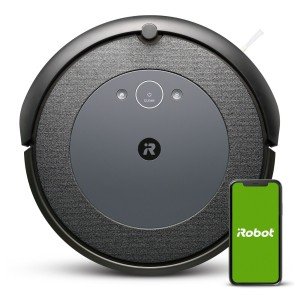The Rise of Bagless Robot Vacuums: Revolutionizing Home Cleaning
Over the last few years, home cleaning has actually progressed considerably with developments in technology, particularly in the world of vacuum cleaners. Amongst the most ingenious modifications is the introduction of bagless robot vacuums. These little, automated cleaning gadgets are designed to make preserving a clean home more efficient and user-friendly. This post looks into the features, advantages, and factors to consider of bagless robot vacuums, assisting consumers make notified decisions about home cleaning options.
What is a Bagless Robot Vacuum?
Bagless robot vacuums are autonomous cleaning gadgets that operate without the need for conventional dust bags. Instead, they collect dirt and particles in an onboard container that can be emptied when complete. redirected here enhances convenience, as users do not require to acquire replacement bags or stress over disposal. They are particularly attracting those looking for a low-maintenance cleaning service.
Secret Features of Bagless Robot Vacuums
- Smart Navigation: Bagless robot vacuums use sensors and algorithms to map out a cleaning area, preventing obstacles and efficiently covering surface areas.
- Setting up Capabilities: Many designs permit users to set cleaning schedules, guaranteeing that floorings are kept even when homeowners are away.
- Several Cleaning Modes: They may use different cleaning modes for different tasks, such as area cleaning, edge cleaning, and deep cleaning.
- Self-Charging: Most bagless robot vacuums can return to their charging stations when their battery is low, ensuring they are always prepared for cleaning.
- Push-button control: Many designs can be managed by means of smartphone apps, providing users with the capability to begin or stop cleaning sessions from another location.
The following table summarizes some popular models of bagless robot vacuums and their specs:
| Model | Battery Life | Dustbin Capacity | Smart Features | Price |
|---|---|---|---|---|
| iRobot Roomba 675 | 90 mins | 0.6 liters | App control, voice assistant | ₤ 299 |
| Eufy RoboVac 11S | 100 minutes | 0.6 liters | One-touch control | ₤ 219 |
| Neato Botvac D7 | 120 minutes | 0.7 liters | Smart mapping, no-go lines | ₤ 599 |
| Roborock S6 Pure | 150 mins | 0.48 liters | App control, virtual barriers | ₤ 399 |
Advantages of Bagless Robot Vacuums
Bagless robot vacuums offer numerous advantages over traditional vacuums and bagged designs. Here are some crucial advantages:
- Cost-Effective: Without the requirement to acquire replacement bags, users can conserve cash in the long term.
- Eco-Friendly: The absence of non reusable bags suggests less waste developed, making bagless options a more eco-friendly option.
- Simple and easy Maintenance: Many bagless designs feature washable filters, minimizing maintenance inconveniences.
- Convenient Cleaning: Automated cleaning schedules and hands-free operation significantly decrease the time and effort required for home cleaning.
- Advanced Features: Bagless robot vacuums typically come geared up with modern technology, providing various smart features and personalization choices.
Factors to consider When Choosing a Bagless Robot Vacuum
While bagless robot vacuums offer numerous benefits, there are likewise possible downsides to think about. Here are some factors customers should consider:
- Dustbin Capacity: Bagless vacuums require frequent emptying, especially in households with animals or high traffic. Buyers must think about dustbin size relative to their cleaning frequency.
- Suction Power: Not all models use the same suction abilities. Consumers ought to look for vacuums with strong suction for effective cleaning on numerous surface areas.
- Noise Level: Some designs might be louder than standard vacuums. Sound level can be an important aspect, especially in settings where quiet operation is wanted.
- Floor Types: Users must confirm that the vacuum is ideal for their flooring combination, such as carpet, hardwood, or tile.
- Maintenance: Bagless robot vacuums might require regular upkeep, including cleaning brushes and filters, to maintain optimal efficiency.
Frequently Asked Questions about Bagless Robot Vacuums
Q1: How typically should I empty the dustbin of a bagless robot vacuum?
A1: It is recommended to empty the dustbin after every cleaning session, specifically if you have family pets or high traffic areas. Keeping the dustbin less than complete guarantees optimal suction and performance.
Q2: Can bagless robot vacuums successfully tidy carpets?
A2: Yes, many bagless robot vacuums are designed particularly for carpets and have adjustable suction modes for various floor types. Nevertheless, it is necessary to examine producer specifications for carpet cleaning abilities.
Q3: Are bagless robot vacuums ideal for pet hair?
A3: Many models are created with effective suction and specialized brushes to effectively get pet hair. Consumers must search for vacuums particularly marketed as pet-friendly for optimum efficiency.
Q4: How long do bagless robot vacuums typically last?
A4: The life-span of a bagless robot vacuum can vary, but a lot of models last in between 3 to 5 years with proper care and upkeep.
Q5: Is it essential to replace filters in a bagless robot vacuum?
A5: Yes, most bagless robot vacuums have filters that should be replaced or cleaned periodically. This maintenance helps maintain suction and improves air quality.
Bagless robot vacuums have transformed the landscape of home cleaning, offering effective, affordable, and ecologically friendly solutions for maintaining cleanliness. With features that enhance user experience, these smart gadgets use a useful alternative to conventional vacuum. When choosing a bagless robot vacuum, consumers ought to consider their particular cleaning needs and choices, along with the vacuum's abilities, to discover the perfect design for their home. As technology continues to advance, the abilities of bagless robot vacuums are most likely to evolve further, making them a much more important addition to contemporary households.

